Not only is Venice a city on stilts whose knees are dipped in salt water, but also it is a mosaic city.
In 1926 Venice included the city of Mestre - an unremarkable port town in which, however, it is much better to rent a hotel room or an apartment. Apart from Mestre, the “mosaic” includes 118 islets in the Adriatic sea. Most of them are closed to the public, but there are those which must be visited during your stay in Venice.

Murano
This island is situated 1.5 km from Venice, or Rialto island (as it was called in olden times and is sometimes called now).
Its architecture is not impressive at all. If Venice amazes you with every single corner - its unusual facades, exquisite windows, doorways and even doorhandles! - in such a way that you’re happy to get lost in this beauty, then Murano cannot boast of beautiful secrets. However, those keen on home design, will appreciate the assortment of local shops.
This island has been a home to glassblowers since the 13th century. It is a place where secrets and mysteries of this craft have been passed down through generations of families. A couple of centuries ago leaving the island without permission or revealing secrets of glassblowing was punishable by death.
Today the island’s key industry is in decline, as people’s tastes have significantly changed since the Renaissance, while the local glass design remains the same. According to The Guardian, since 1990, the size of the workforce has shrunk from about 6,000 to less than 1,000.
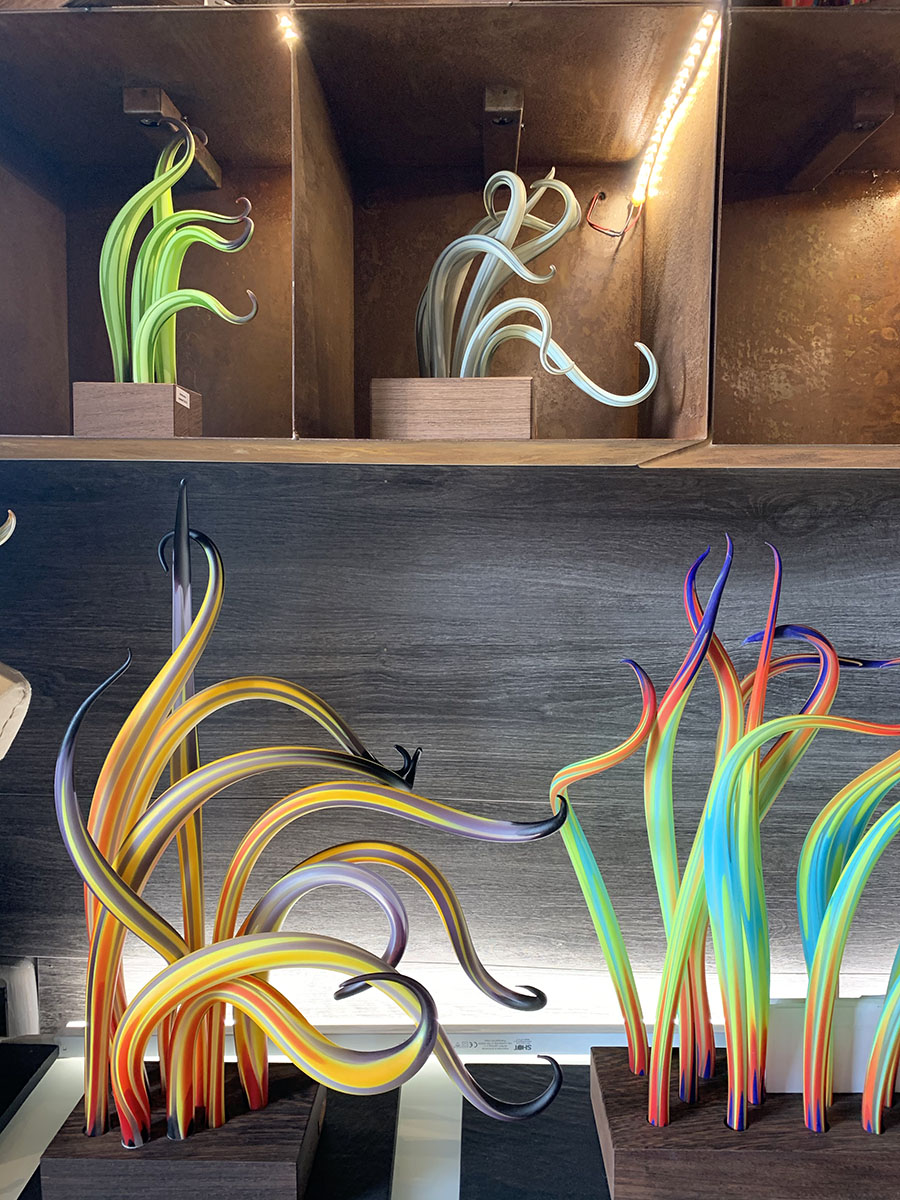
One of the reason of Murano’s decline is an influx of cheap imitations from China and Eastern Europe which takes between 40% and 45% of total sales, according to Gianni de Checchi of the craftworkers’ federation, Confartigianato.
Indeed, when strolling along Murano’s Grand Canal and deeper in the islet, you can see multiple shops selling simple glasses or small unremarkable vases for 20 euros which tourists buy “just to check the box”, for the sake of appearance. A vase of medium size and interesting design would cost around 200 euros.
In order to solve the imitation problem, a group of companies created a trademark in 1994 which certifies that the product was made in Murano. By 2012, about 50 companies were using the Artistic Glass Murano® trademark of origin. So here is a tip how to check whether your souvenir is of genuine Murano glass. Ask for a certificate!
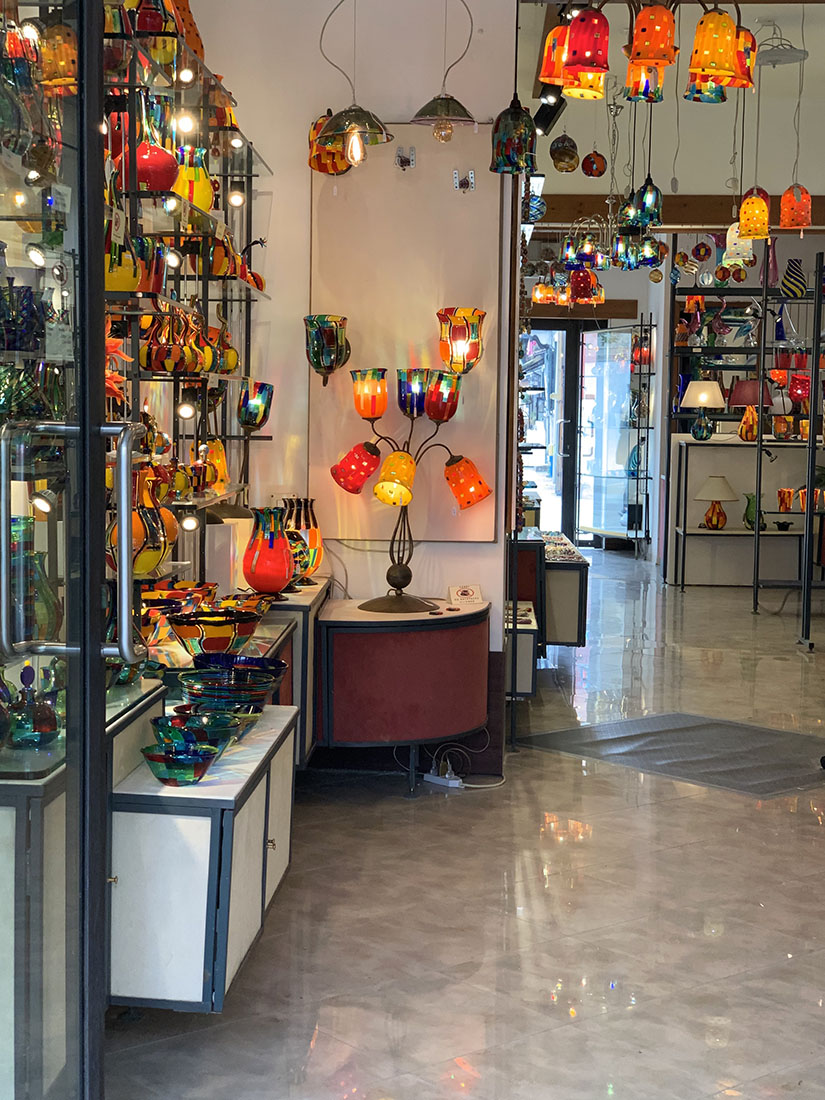
What else can we buy here? Apart from glass ware, you can find exquisite bijouterie and figurines here. I saw unusual beads and cute micro-accessories in the Toffolo store which is on Fondamenta Vetrai 37. Check them out yourselves!
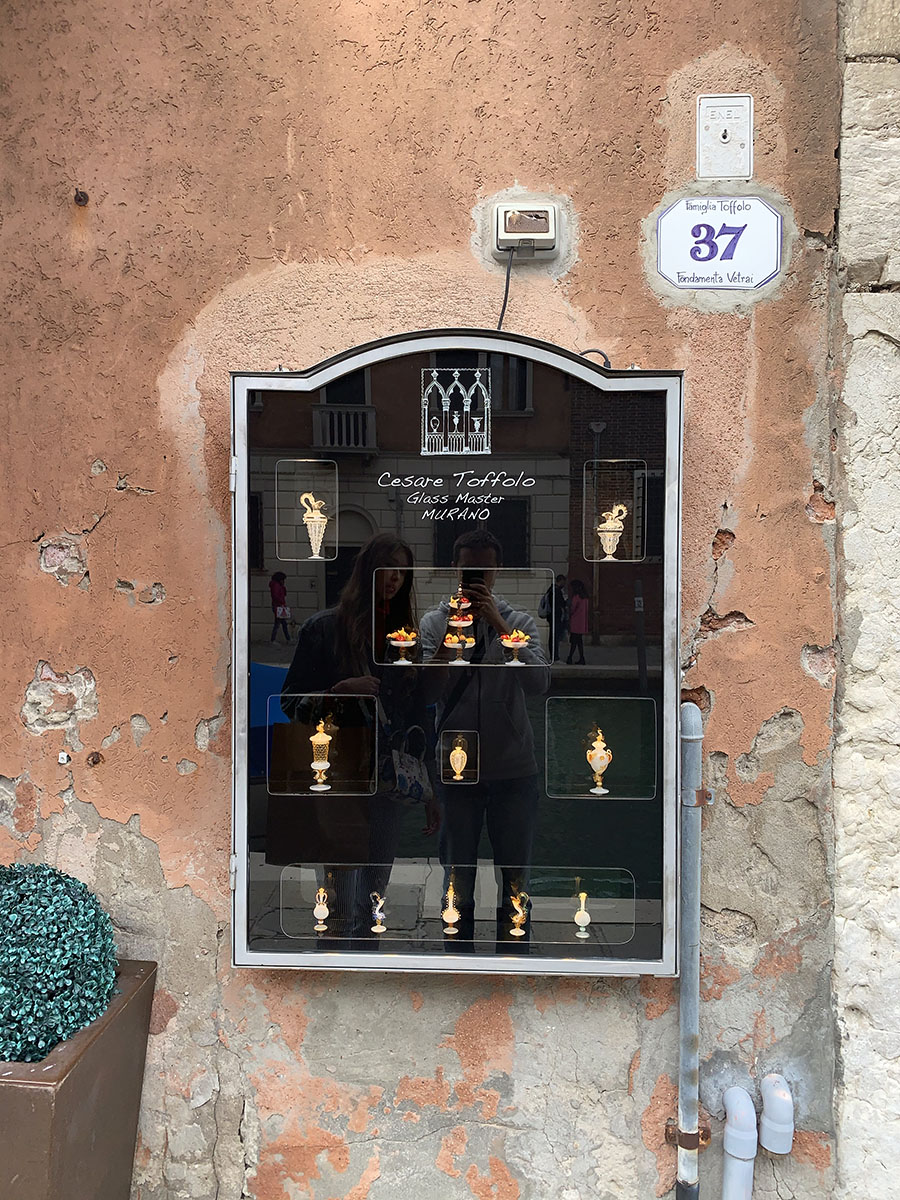
You can even find chandeliers and pin-up lamps - all made of fragile glass which makes them special. What a pity I am not currently designing our apartment - I would manage to bring some lamps from here.
Currently living in a rented apartment in Cyprus, the best thing I could bring from Murano was a small vase with a typical Murano ornament. A trifle to make my current home cosier.
The vase was purchased at Gatto Flora Vetri Artistici shop located on 12-13 F.Giustinian street - right next to the Glass Museum, near “Museo” bus stop, opposite the lighthouse which is on the other side of Grand Canal. Yes, Murano has its own Grand Canal! And Gatto Flora has diversity:
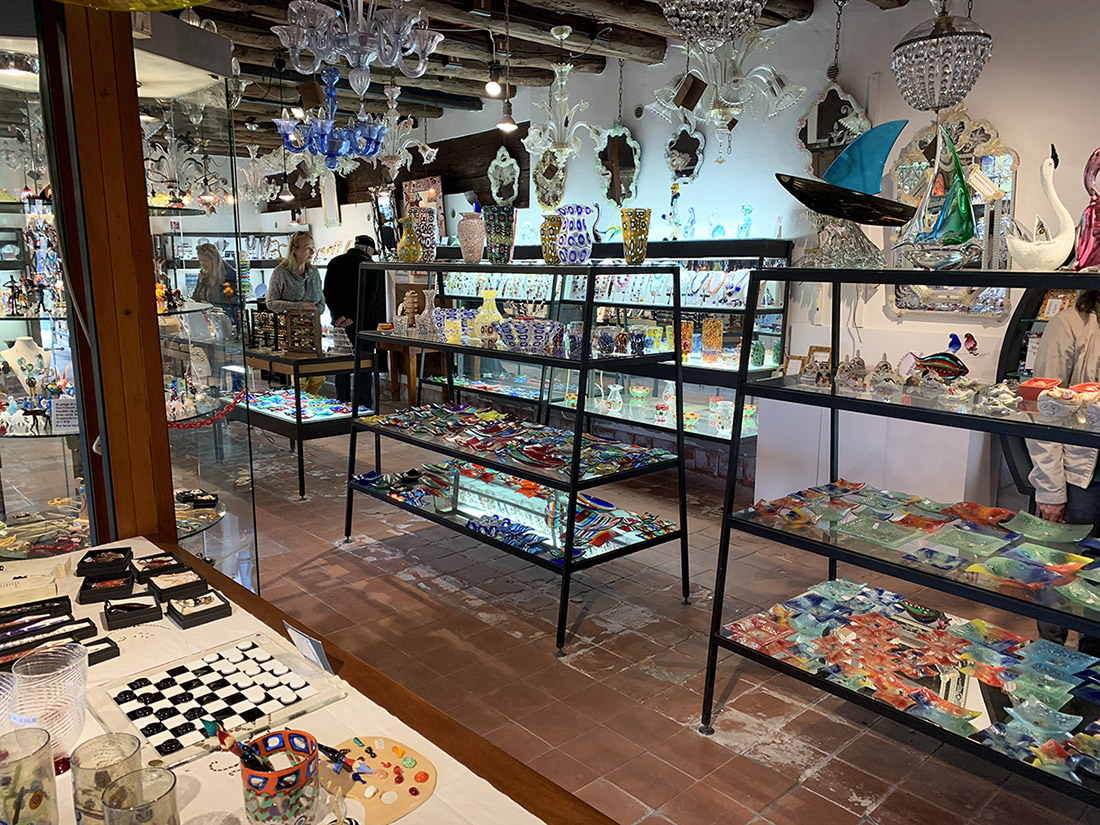
Inside Gatto Flora

And here is my vase
What if we come to Murano for something else, rather than glass shopping?
Hardly. You can hardly find a sight here which would not be somehow related to the glass industry. For example, Museo Vetrario - Museum of Glass, which is a neighbour of Gatto Flora, located on Giustinian street. It reveals the history of Murano glass industry step by step, century after century.
Its working hours:
From November 1 to March 31: 10:30 - 16:30
From April 1 to October 31: 10:30 - 18:00
The ticket office closes 30 minutes before the Museum closes.
The entrance costs 12 euros, but there are also discounts. You can find more details on the official website here.
Have a stroll to Campo Santo Stefano after your visit to the Museum. That is the most central square with the church and clock tower dated the 19th century which have long become the islet’s symbol. In October 2019 the square was adorned with this beautiful glass Christmas tree:
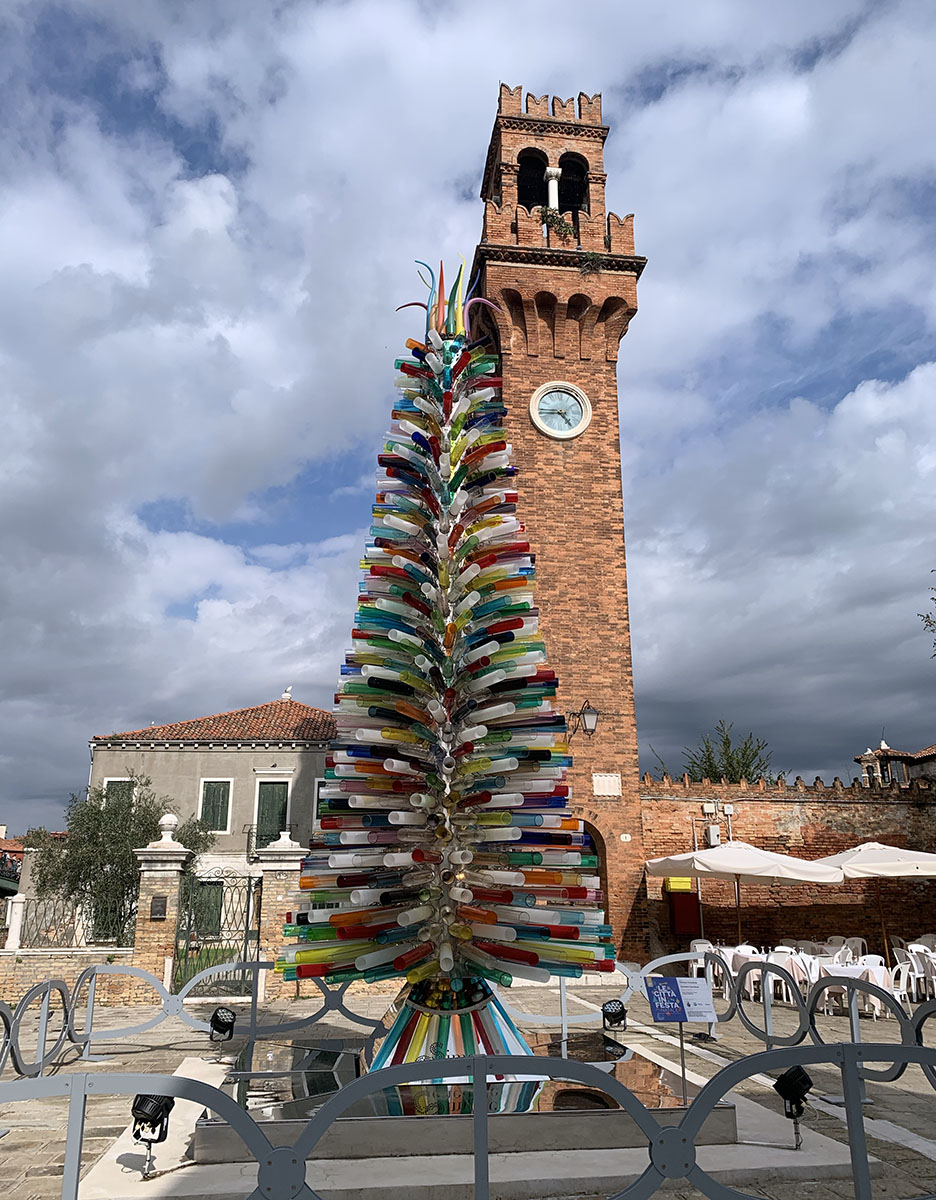

Alisa who caught a cold, but prepared for Christmas…
You can get to Murano by vaporetto lines 3, 4.1, 4.2, 12 and a couple of others.
Burano
It’s not really an island. It’s a celebration! Here, just like in Cinque Terre, houses were painted in different colours to help fishermen and sailors find their homes in a heavy fog:
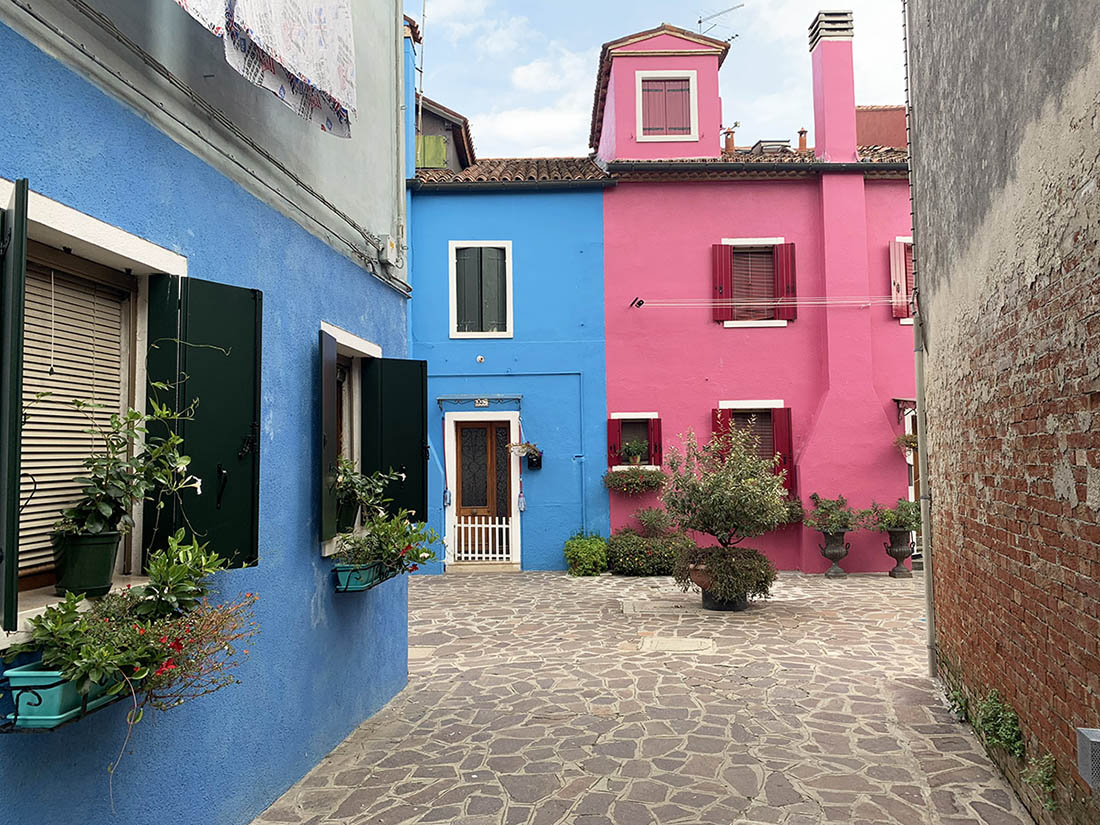

Today this rainbow of colours is Burano’s brandmark. Residents do not even have a right to repaint their own houses without permission of the government.
Burano is famous for its local craft - hand lace making - which emerged back in the Renaissance and has a legend behind. Check it here. But I, having watched enough lace products in Cyprus’s Lefkara (in which the tradition of lace-making was influenced by the Venetians and is now on the UNESCO list of Intangible Cultural Heritage), were not interested in chasing laces here.
It might have been a mistake, though. Rumour has it that the local craft is so wonderful that even Dolce & Gabbana buy laces for their “alta moda Italiana” collections, though I have not found any interview proving this (If you know anything about it and can send me a link to the article or interview, please message me in Instagram direct or email me, I will be grateful).
To be completely honest, it is easy to pass by lace shops and not to give any attention its poducts. Because you are completely absorbed in beautiful facades:
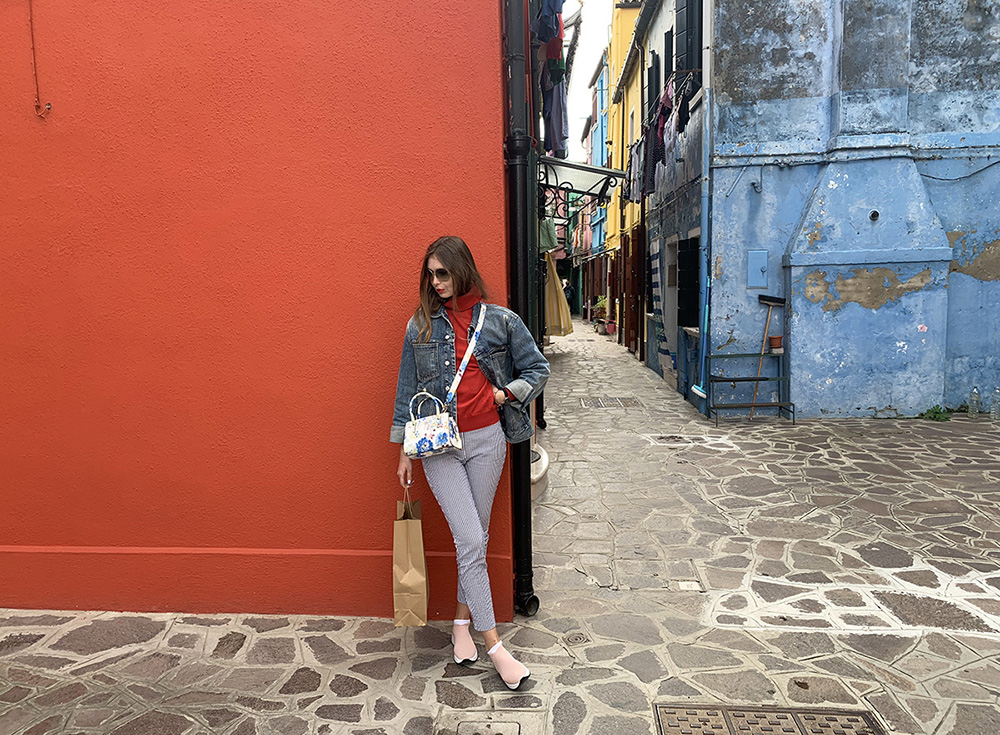
Deeper in the island
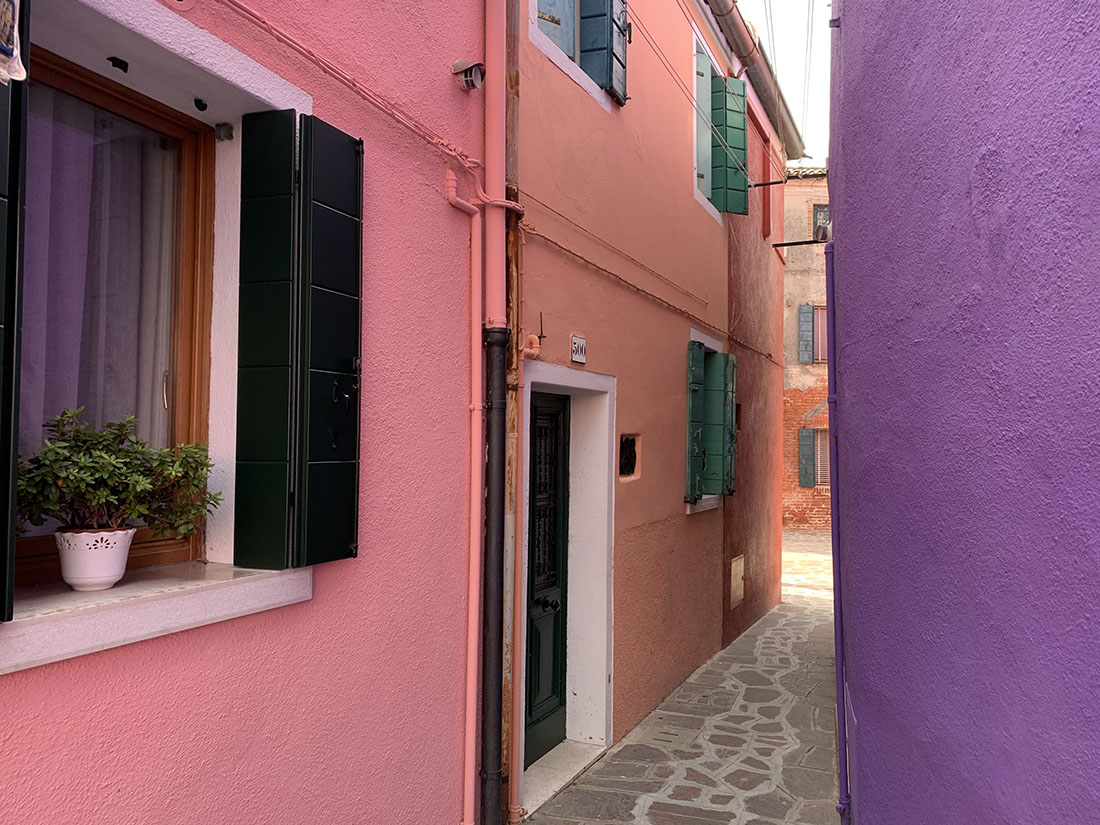
Lifestyle of Italians remains untouched in Burano. The locals seem to not notice crowds of tourists chasing after souvenirs and bright photo zones. A fussy tourist accidentally hits someone’s laundry left on a dryer in front of a canal, then stops to have a small talk with locals having rest at a cafe. Crowds are like humidity for locals - they penetrate the island all the way through.
Here you can only move on foot. And on foot you can get to the main sights, for instance, San Martino Church on Baldassarre Galuppi square, in the very center of the island. Or you can reach Museo del Merletto - or Lace Museum which is interesting not only thanks to the history of this craft, but also various temporary exhibitions, like “Burano and Its Painters”.
The Museum is open:
From November 1 to March 31: 10:30 - 16:30
From April 1 to October 31: 10:30 - 17:00
It’s closed on Mondays, December 25, January 1 and May 1.
A regular fee is 5 euros; entrance is free for children, students, elderly people, whiole holders of The Rolling Venice card are given discounts. You can check details on the site of the Museum.
You can reach Burano via vaporetto 12, 14 and some others.
Lido
Exquisiteness 11 km long. This island protects Venice from heavy winds and waves.
Level clean streets, waving sycamore trees, perfect pavement. Buses and expensive cars, long beaches and tall villas - this island reminded me of Cannes, and for a good reason. Lido is a home for the Venice Film Festival.
The first festival was held in August 1932 as part of the Venice Biennale in Lido’s Excelsior Hotel, which still remains one of the venues.
It was not actually a competition in 1932 - rather, it was a show of movies presented by nine countries. The first festival was attended by 25 thousand spectators.
Since 1934 the festival has been held regularly in late August or early September on the island of Lido. It was not organized in wartime between 1943 and 1945, then in 1973 and in 1977-1978 - when the Festival did not have its charter.
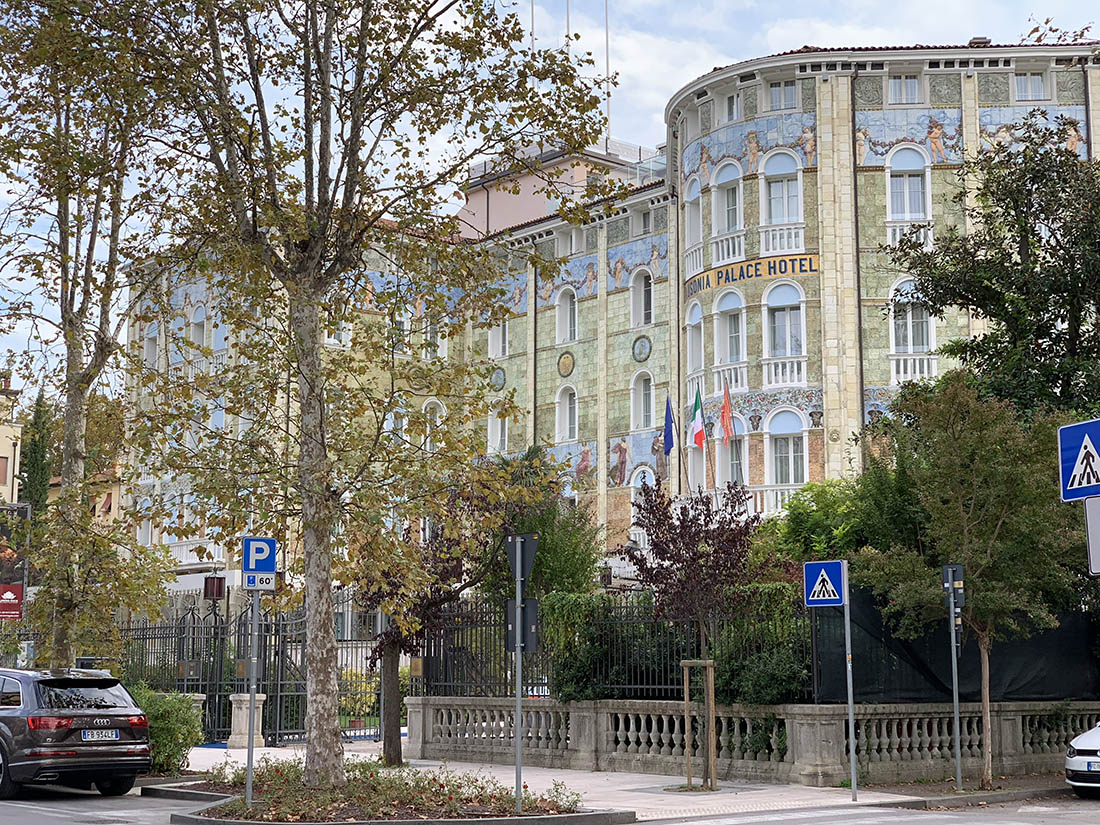
Grande Albergo Ausonia & Hungaria, founded in 1907, was closed during the war and reopened in 1920. Today it is one of the best places of the island to stay. It offers a private beach, spa services, excellent breakfast and costs 145 euros per night
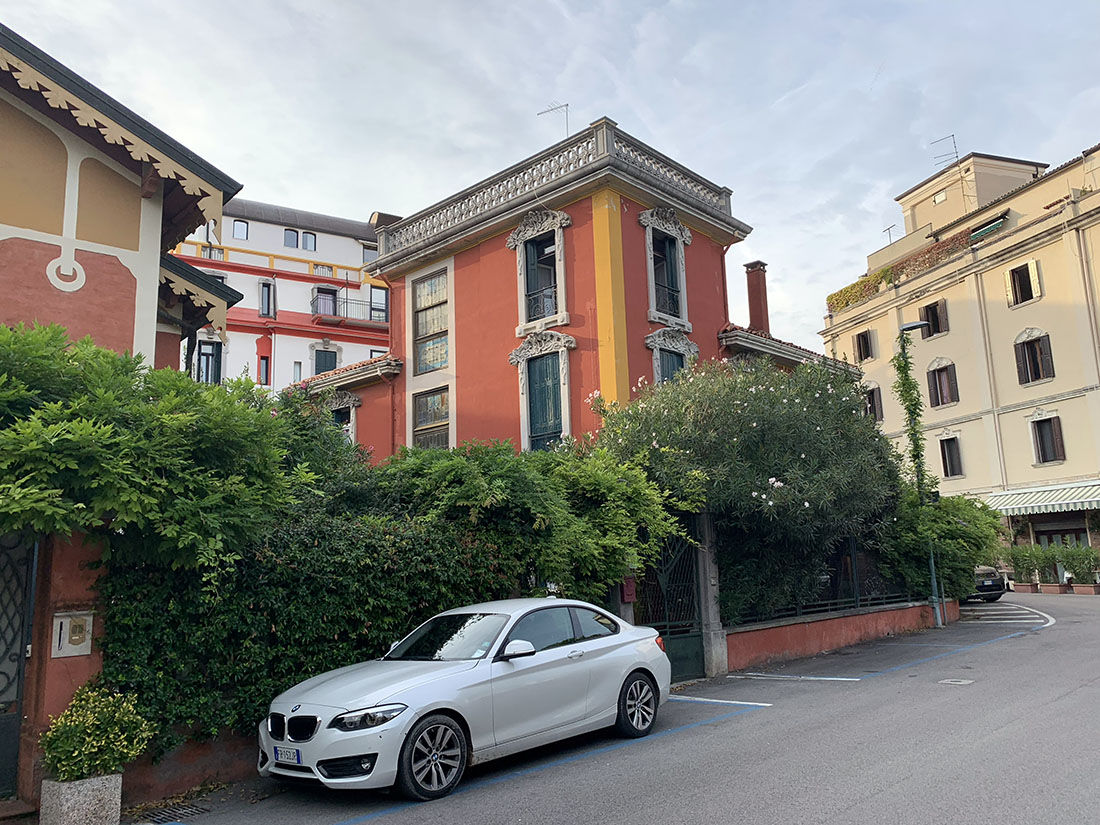
This is how Lido’s ‘remote parts’ look like - exquisite backstreets
In autumn Lido offers calmness and escape from crowds. It also gives you beach holidays which last here up to October, according to travel guides.
Yes, when planning our most recent Italian trip, we doubted whether a swimsuit in the suitcase would be necessary, while we should have asked ourselves whether a nasal spray would not be extra. Here we are: me, a seagull and my runny nose:
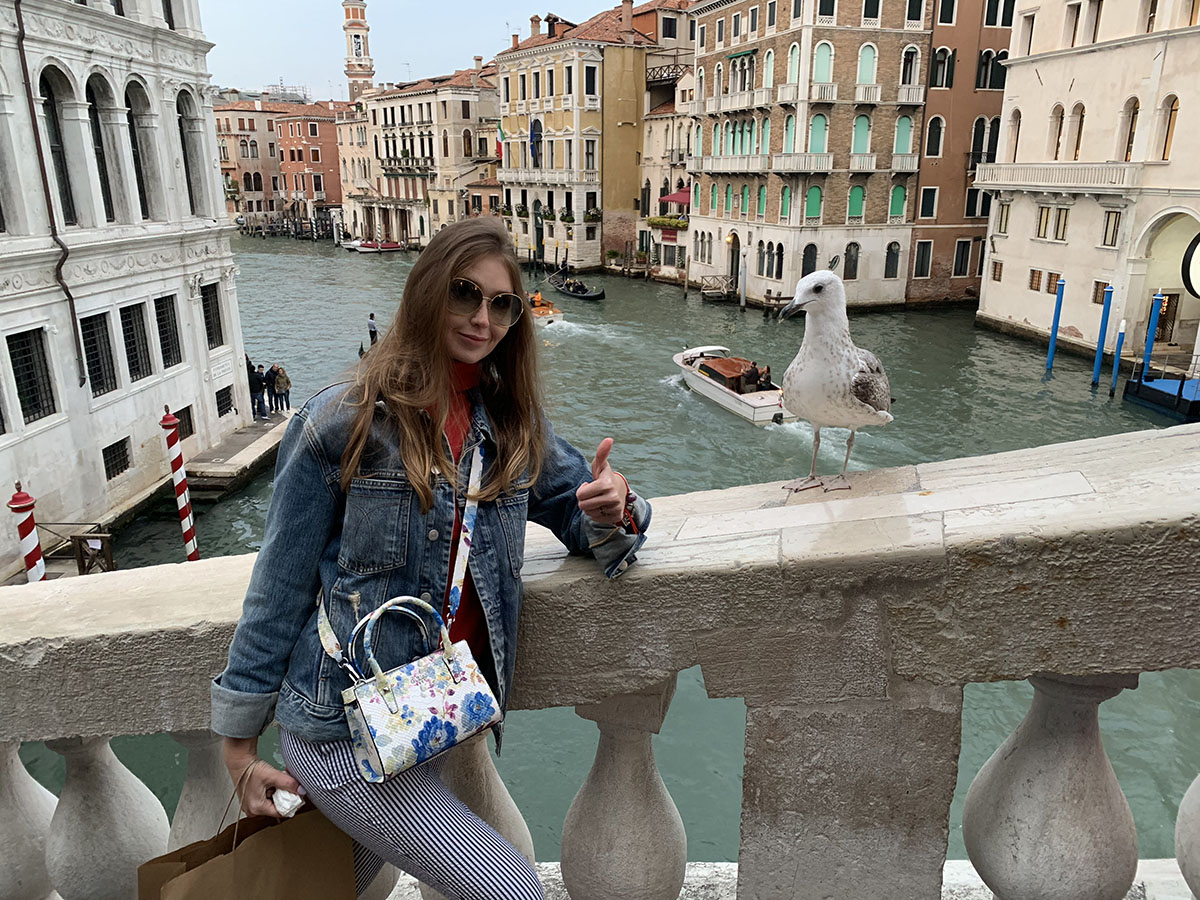
Back in Venice
PS: you can get to Lido by Vaporetto 1 or 2 in peak season.
Read more
SimBIOsi Restaurant in Florence
Место: Ресторан SimBIOsi во Флоренции. Классика, модерн, органик
Чинкве Терре: Ваше идеальное место для каникул. Всегда
Лайфхак: как проверить пиццерию на итальянскость
Три Венецианских Острова: Мурано, Бурано и Лидо — Яркость, Мозаика и Изысканность
Венецианский транспорт: Цены, где купить билеты и полный обзор маршрутов